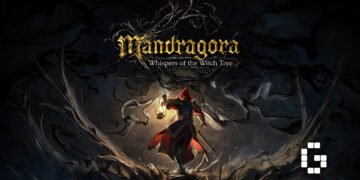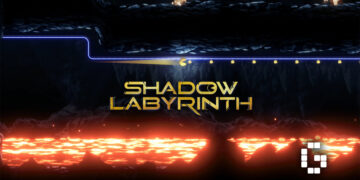A month after our neighbors down south, we’d finally gotten our hands on one of the year’s hottest consoles, the PS5. After all, this is more than just a mid-gen upgrade like the PS4 Pro. For better or worse, the standards set by the PS5 will say a lot about the direction of the games industry for the next 5 years.
With that in mind, we’d finally put in enough time on our end to put to words our feelings on the PS5. Is it worth all the intense drama leading up to its launch? Definitely not. But is it the perfect shiny new thing to cap off what for many has been a lackluster year? Read on and find out.
Appearance

I mean, it’s not too far a stretch to say the PS5 is an odd looking console. Its weird curves make it look right at home with the rest of your entertainment setup, if said setup was a modern art museum. Still, it somehow manages to look like a logical step-up from the PS4. I really like the colored LED strip running alongside it, since it makes it look super futuristic.
That’s also coupled with its size. It’s about 40cm tall, which is a lot harder to conceptualize than you’d think. Every time I think I’ve wrapped my head around how big it is, I still find myself taken aback by the sheer size of it. It’s not all about flaunting dominance, though, previous teardown videos of the PS5 had shown us that a lot of this girth is built to assist with cooling the console. Considering how often the PS4 would wheeze trying to get in enough air, I don’t quite mind it.

That being said, it does make displaying the console a little difficult. the marketing material always shows the PS5 upright, like a futuristic skyscraper. however, it’s increasingly difficult to find a configuration where that works since it’s so tall a lot of pre-built entertainment systems jsut won’t have space for its vertical reach.
Thankfully, the stand also enables a horizontal layout, where the PS5 is a lot more manageable. If you’re using the physical edition (like we are) though, you’ll need to just remember which way up the disc is when it goes in. Personally I don’t mind the little bump made by the additional disc drive, though I can see how that might bother some.
One gripe I have with the PS5 is with its USB spread. The console has three USB Type-A, though only one of them is on the front of the console. As someone who enjoys playing Guilty Gear on a fight stick, it’s going to make having friends over a lot more difficult since we’d have to plug it into the back of the device.
DualSense Controller

It’s no exaggeration to say that I love the Dualsense controller. From the Dualshock 3 to Dualshock 4, we got a generally more sturdy controller, and a host of new features for content creation. With the Dualsense, we’ve got a more robust controller that thinks to implement more features for an immersive play experience.
On top of that, the outside has tiny Playstation logos molded on to its body, which is a cool easter egg. But I digress.

The star of the Dualsense is its Haptic Feedback. Unlike the Dualshock’s physical rumble, the Dualsense uses speakers at various points on the controller that emit high-bass sounds to cause vibrations. It’s the same technology used in the Nintendo Switch, writ much larger.
Right now it still feels a little gimmicky, since a lot of games have implemented the feature as just a way of showing it’s there. Astro’s Playroom, the tech demo that comes free with the PS5 has the controller emit vibrations with Astro’s footsteps, and Demon’s Souls has the vibrations travel along the sides of the controller as you do brutal visceral attacks on enemies.
Still, I’m looking forward to what game developers can do to integrate the haptic feedback into the gameplay experience, since it can be used to dictate certain direcctions to the player.
There’s also the case of the Adaptive Triggers, which allow variable resistance on the left and right triggers as you pull them. This feature seems to have already found its primary use in games like Call of Duty: Black Ops Cold War, where the triggers kick back as you pull them to fire your gun.

Astro’s Playroom also takes this pretty far, mimicking sensations like pulling levers and cracking open Gachapons. It also sheds light on another of the controller’s features- rather than have the triggers be a binary on/off, it can actually sense light pulls vs strong pulls.
Aside from that, it improves on the Dualshock 4’s microphone port by also having a built-in microphone, which flashes orange to let you know you have it muted. As someone who has their own headset with a microphone, this isn’t as important to me personally, but it’s great for people who don’t have a headset and still want to communicate with their friends.
Launch Titles That Will Blow Specific People Away

Personally, I find that the PS5 has a strange array of launch titles, echoing back to the PS4’s less-than-stellar launch window too. It’s not that any of the games at launch are bad, it just doesn’t quite feel like any of them have that big console-pushing vibe since they’re all more niche titles.
That being said, I’m a huge fan of Demon’s Souls Remastered, the remake of the PS3 cult classic. It’s a faithful recreation of a great RPG, and runs excellently on the PS5. Other than that there aren’t many PS5-exclusives, since Miles Morales and Call of Duty are all on previous-gen consoles as well.
That’s not to say there’s nothing to play on the PS5, however. One of the big buzzwords this generation is backwards compatibility, and the PS5 lets you play most of your PS4 titles on the next-gen console without having to buy a re-release. Combined with the new Playstation Plus Collection, you’ll have plenty to play on the console even if it’s your first one, since the mere buy-in of a Playstation Plus subscription gets you titles like God of War and Bloodborne, big stalwarts of the PS4.
The Playstation Is The Station To Play Games
Some of the other big buzzwords involving the PS5 are its raytrace-enabled graphics and its solid-state drive (SSD). Raytracing has been a big topic in gaming overall as PCs moved towards the rendering method for more realistic lighting and reflections. With this generation of consoles, console players can essentially get a decent RTX-enabled PC for a fraction of the price.

Once again, the best showcase of this is in Astro’s Playroom. In the game’s GPU Jungle level, it fully flexes the power of the PS5, showing various physics-simulated blades of grass in the wind, all along a soft sunset. Even Astro’s glossy body lights up, reflecting the environmental light around them.
Not all games use raytracing, however. Demon’s Souls, for example, eschews the rendering method entirely. While the shiny new toy is great to have, not every game needs it, and sometimes games with strong art directions will be better off using it for performance mode.

Devil May Cry 5 Special Edition also lets you choose between these features, using the PS5’s Performance Mode to turn off raytracing and instead push for up to 120fps gameplay. The fact games are letting you choose your options is great, especially for action game fans who would much rather play a high-framerate game at lower resolutions than 30 frames of ray-traced 8k.
While raytracing is more of a “your mileage may vary” buzzword, it can’t be understated how important the PS5’s SSD is for gameplay. Many modern PC games swear by the SSD, having it be a core feature of their recommended settings. This is because compared to the physical Hard Disk Drive (HDD), the SSD has much faster write speeds meaning it can load things like textures with minimal delay.
In fact, while most games need next-gen updates to get them looking better on PS5, the SSD works unilaterally. One of my big gripes with the PS4 towards the end of its cycle is that many games had absurdly long loading times, like Monster Hunter World: Iceborne. Thanks to the PS5’s SSD, the loading times are dramatically cut, getting you into your hunts much faster.
User Experience
One understated part of the console is its UI. PlayStation has lived all along the spectrum of UI, from the pretty good PS4 UI to the not great at all PS Vita.

With the PS5, there’s quite a lot different from the PS4. One of the big features is the new Switcher, which lets you switch between apps without having to close them. This is great for things like checking the media folder or Playstation Store, though some titles tend to bug out while using it, such as Marvel’s Spider-Man: Miles Morales.
One thing I lament is the lack of PS4 themes, thanks to the fact that mousing over individual games will get you a sort of “mini theme”, playing music from the game in question and changing the backgrounds. It’s cool, but I guess I liked the idea of my PS4 being able to tell you what my favorite game was even if it wasn’t on my dashboard anymore. It’s not a deal breaker, but it’s also not something I’m particularly thrilled about.

There’s also the case of the PS5’s new standard-setting, where X is the new default confirm button instead of Circle. There’s no way to change this in the settings for the PS5, except for using a universal override that the PS5 also has.
So if you’re comfortable with the Circle and X buttons being reversed the whole way, it’s a non-issue. Otherwise, getting used to the X-standard is a small inconvenience that you’ll eventually overcome. It should be noted though that PS4 games that use the Circle button like Asian-region versions of Bloodborne will still use them on the PS5, so it’s not like it completely unifies the system.
Industry-Specific Gripes

If you’re a content creator waiting to get your PS5, there’s some important details you should note about the PS5. A lot of this has to do with the console’s HDMI 2.1 cable, which may mess up a lot of recording setups.
Many capture cards and even displays don’t support the HDMI 2.1, although the format itself is backwards compatible. This means that you can easily plug the PS5 in with an older HDMI 2.0 (what you’re probably already using), circumventing a lot of problems. But if 8K 120fps is something you’re particularly interested in, you’ll need to start upgrading your setup and using the PS5’s own built in streaming features, since many capture cards on the market don’t support HDMI 2.1.
Closing Thoughts

The PS5 is a much bigger leap from the PS4 than the PS4 was from the PS3. It’s an absolute powerhouse of a machine, and the backwards compatibility makes such a compelling argument to purchase it since it feels like a unilateral upgrade to its predecessor.
While it’s fun to tease Playstation for their large console, it’s surprisingly purpose-built to make sure it does what it says on the box- play games. That and the more immersive features on the Dualsense make for not just a great console, but one that’s trying to push for a more immersive gaming experience beyond “new game pretty picture”.
That being said, there are still gripes to be had regarding the console. It’s got its fair share of bugs, the SSD means its got limited space, and Sony hasn’t allowed external drives to be used to expand that storage yet. It’s by no means the messiah of gaming, though it’s certainly improving the ways we interact with games.
You can get your own when stock becomes available at RM2299 for the Physical Edition and RM1869 for the discless Digital Edition
| Pros | Cons |
| The Dualsense is an amazing controller | Managing storage space on the PS5 can be frustrating |
| SSD makes playing older games better | There’s nothing scarier than your brand new console freezing on you |
| Astro’s Playroom is a great tech demo | Needing to Learn About HDMI Formats |



![[EXCLUSIVE] Honor of Kings Goes Global: Interview with James Yang on International Esports Expansion](https://cdn.gamerbraves.com/2025/08/James-Yang-Exclusive_Interview_FI-360x180.jpg)









![[EXCLUSIVE] Creative Masterminds from Gearbox Software Reveal What Makes Borderlands 4 Worth the Wait](https://cdn.gamerbraves.com/2025/07/Borderlands-4-at-Bilibili-World-2025_Interview_FI-360x180.jpg)














